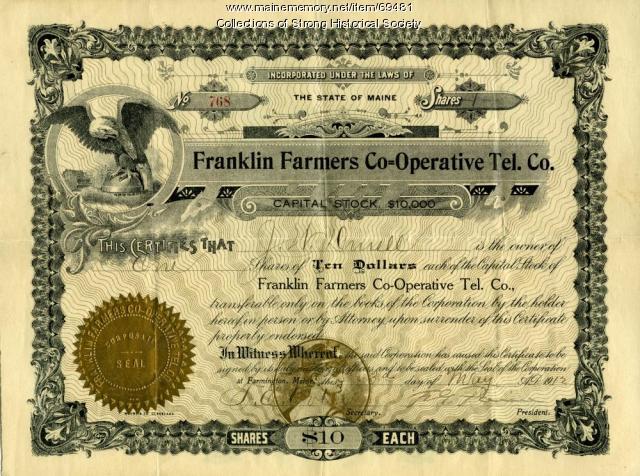Keywords: History of Science
Item 135726
Bird and butterfly display at the Portland Society of Natural History, ca. 1965
Contributed by: Maine Historical Society Date: circa 1965 Location: Portland Media: Photographic print (edited)
Item 65832
Domestic Science class, Farmington, ca. 1917
Contributed by: Mantor Library at UMF Date: circa 1917 Location: Farmington Media: Photographic print
Item 111663
Contributed by: Maine Historical Society Date: 1925–1926 Location: Saco Client: York Institute Architect: John Calvin Stevens and John Howard Stevens Architects
Exhibit
CODE RED: Climate, Justice & Natural History Collections
Explore topics around climate change by reuniting collections from one of the nation's earliest natural history museums, the Portland Society of Natural History. The exhibition focuses on how museums collect, and the role of humans in creating changes in society, climate, and biodiversity.
Exhibit
A Brief History of Colby College
Colby originated in 1813 as Maine Literary and Theological Institution and is now a small private liberal arts college of about 1,800 students. A timeline of the history and development of Colby College from 1813 until the present.
Site Page
Mantor Library, University of Maine Farmington
View collections, facts, and contact information for this Contributing Partner.
Site Page
Strong, a Mussul Unsquit village - Strong's History - Page 4 of 4
"The history of one in particular, the Strong Methodist Church, began shortly after the American Revolutionary War."
Story
From Naturalists to Environmentalists
by Andy Beahm
The beginnings of Maine Audubon in the Portland Society of Natural History
Story
Mosher family history and my career at S.D. Warren
by Abbott Mosher
My family settled the Westbrook region and I am a 4th generation paper maker at S.D. Warren.
Lesson Plan
Grade Level: 3-5, 6-8, 9-12
Content Area: Science & Engineering, Social Studies
This lesson plan will give middle and high school students a broad overview of the ash tree population in North America, the Emerald Ash Borer (EAB) threatening it, and the importance of the ash tree to the Wabanaki people in Maine. Students will look at Wabanaki oral histories as well as the geological/glacial beginnings of the region we now know as Maine for a general understanding of how the ash tree came to be a significant part of Wabanaki cultural history and environmental history in Maine. Students will compare national measures to combat the EAB to the Wabanaki-led Ash Task Force’s approaches in Maine, will discuss the benefits and challenges of biological control of invasive species, the concept of climigration, the concepts of Traditional Ecological Knowledge (TEK) and Indigenous Knowledge (IK) and how research scientists arrive at best practices for aiding the environment.
Lesson Plan
Wabanaki Studies: Stewarding Natural Resources
Grade Level: 3-5
Content Area: Science & Engineering, Social Studies
This lesson plan will introduce elementary-grade students to the concepts and importance of Traditional Ecological Knowledge (TEK) and Indigenous Knowledge (IK), taught and understood through oral history to generations of Wabanaki people. Students will engage in discussions about how humans can be stewards of the local ecosystem, and how non-Native Maine citizens can listen to, learn from, and amplify the voices of Wabanaki neighbors to assist in the future of a sustainable environment. Students will learn about Wabanaki artists, teachers, and leaders from the past and present to help contextualize the concepts and ideas in this lesson, and learn about how Wabanaki youth are carrying tradition forward into the future.
















